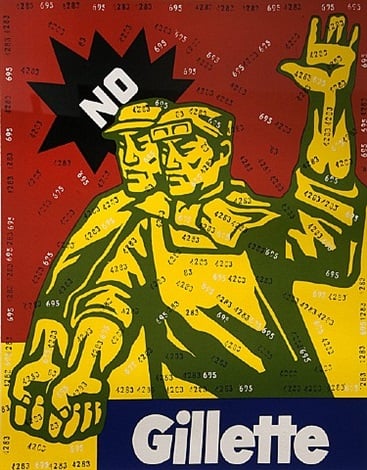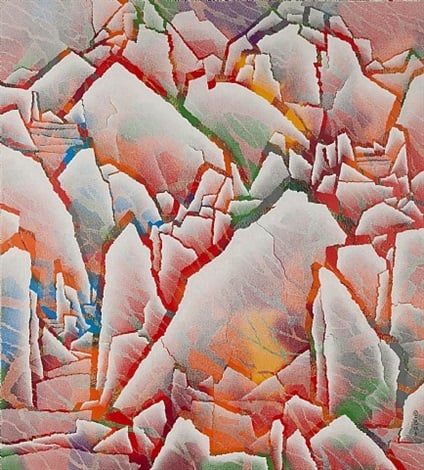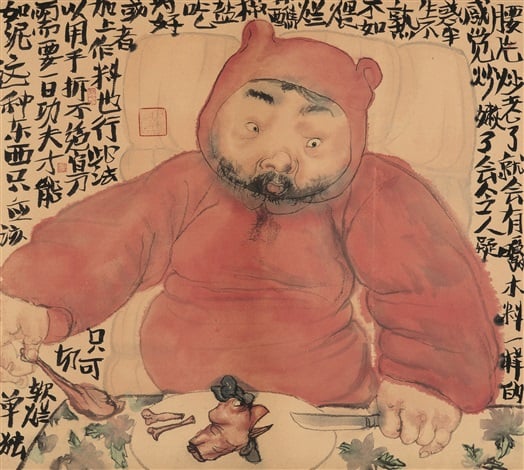Art & Exhibitions
5 Chinese Artists Every Collector Should Own
The list includes Zhang Huan, Wang Guangyi, and Li Liao.

The list includes Zhang Huan, Wang Guangyi, and Li Liao.

Artnet News

The Chinese art market is growing rapidly, and to highlight these changing market trends, artnet will be publishing a report in mid-September, offering an in-depth analysis of the market over the last year. In anticipation of this report, we have put together a list of artists that should be on every collector’s radar. From the established collector to the novice collector, there is an artist for every taste and interest in this vast and still growing market.

The Established Collector: Zhang Huan
Zhang Huan’s latest solo exhibition, “Poppy Field” at Pace Gallery, is making him more popular than ever among collectors. In his painting, photography, and performance art, Zhang focuses on people and their relationship to political power. The intensity of human nature expressed in his works attracts a great deal of attention from scholars. Zhang’s works are often seen in major art fairs around the world, and are achieving a higher hammer price at auction. An established contemporary Chinese art collection must include a piece by Zhang to enhance its credibility.

Wang Guangyi , No Gillette (2002). Courtesy of ArtSpace/Virginia Miller Galleries.
The Starving Collector: Wang Guangyi
We all have seen Wang Guangyi’s “Great Castigation” series in many different auction previews, and read about the fascinating relationship between the Cultural Revolution and his artworks. Wang is best known for combining Mao propaganda motifs with logos of popular commodities. However, the low estimate for his paintings at auction can easily reach $50,000, which is beyond the budget for many new collectors. Luckily, Wang also produces editioned prints that sell for less than $5,000. If you are looking to build a contemporary Chinese art collection, Wang’s prints could be an ideal starting point. In addition, the easy-to-trace provenance of his prints offers security for new investors who would like to re-sell his works fairly quickly.

Qiu Deshu, Fissuring – Landscape (2011). Courtesy of Pearl Lam Galleries.
The Academic Collector: Qiu Deshu
Born in 1948, Qiu Deshu began practicing traditional Chinese ink painting and seal carving as a child. However, he decided to break out of the canon and reinvent traditional painting techniques to create his own unique style known as “fissuring” (Liebian). Qiu established the Grass Painting Society, one of China’s first experimental art societies in the post-Mao era. Qiu’s “fissuring” is a visual metaphor for his life and artistic career, which has experienced dramatic changes and setbacks due to the Cultural Revolution. He paints on Xuan paper (a typical material for Chinese ink painting) in vivid colors, which he collages so as to create a sense of fragmentation. The intricate nature of Qiu’s process makes his work the ideal choice for the academically minded collector. His work offers intellectual depth, with his unique mix of tradition and innovation.

Li Jin, I Am Full (2014). Courtesy of ArtN Space.
The Literary Collector: Li Jin
Much like Qiu Deshu, Li Jin has a background in traditional Chinese ink painting, but has taken these painting techniques in a different direction, becoming the most well-known member of the New Literati School. Li is a master in seductive depictions of the good life, in contrast to the humble imagery of traditional literati subjects, such as elegant landscapes. The playful figure—a Falstaffian man—is modeled on Li himself, and has become a signature of the artist. Unlike the literati masters who source text from well-known literature, Li writes his own text directly on the canvas in order to give viewers a precise context for his works.

Li Liao, Consumption (2012). Photo courtesy of visionaireworld.com.
The Novice Collector: Li Liao
Emerging performance artist Li Liao often examines the boundaries between art and life by placing himself in public spaces, using absurd and small acts to reflect cognitive patterns that underlie social norms. His most provocative work—Consumption—was selected for the New Museum Triennial this year, and was featured in the exhibition “On/Off” at the Ullens Centre for Contemporary Art in Beijing. Li became part of the debate over China’s massive production of Apple products and the exploitation of the people who make these products by working at the Foxconn factory in Shenzhen for a total of 45 days. In reflecting on this experience, his work acts as a commentary on the relationship between production and consumption. That is the way Li works; each of his works are a slice of his real life, avant-garde and provocative, allowing viewers to take a peek into the absurd yet realistic world he experienced and created. Li’s fresh approach to performance art makes him the perfect choice for the novice collector.